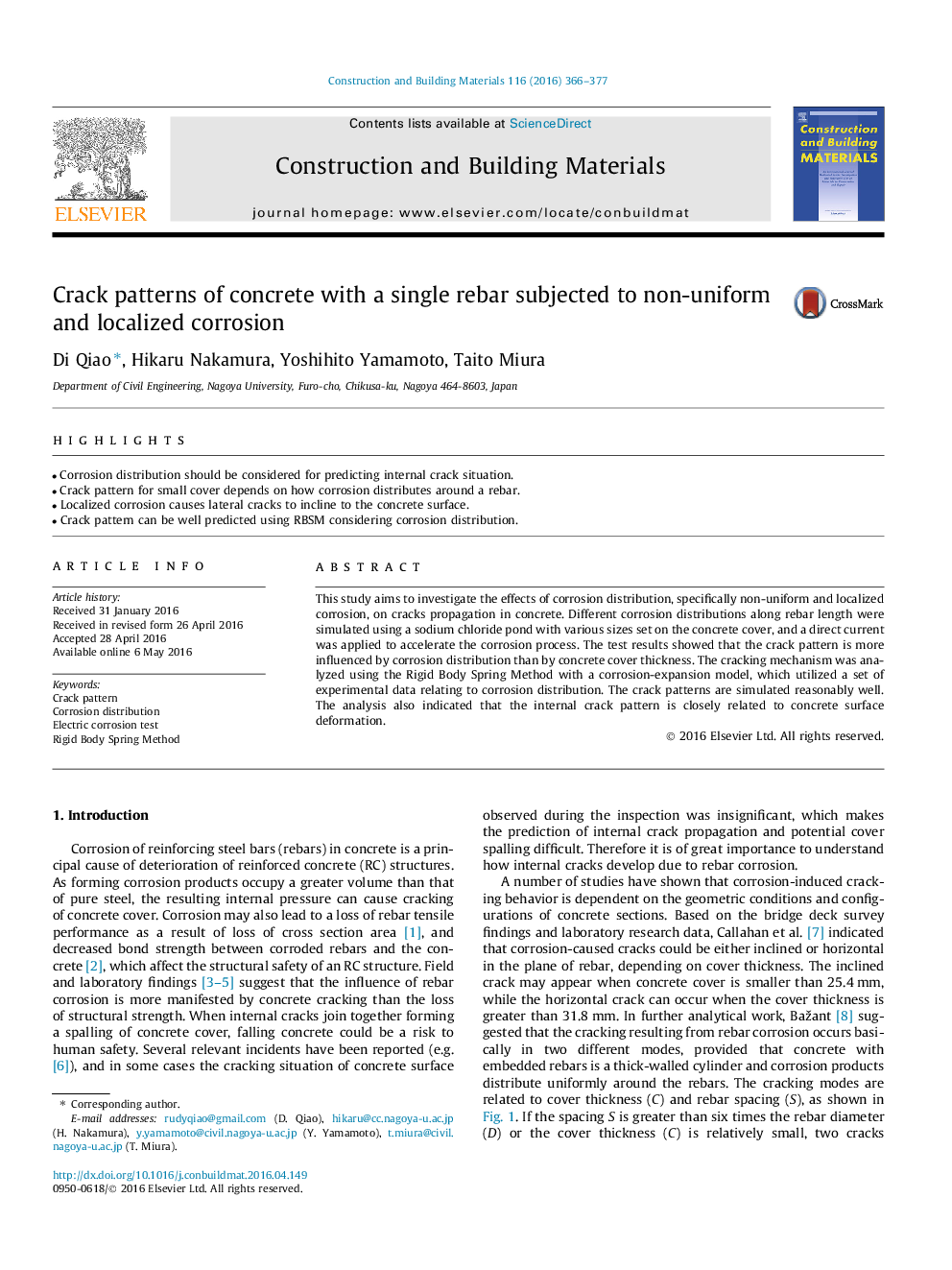| Article ID | Journal | Published Year | Pages | File Type |
|---|---|---|---|---|
| 6718839 | Construction and Building Materials | 2016 | 12 Pages |
Abstract
This study aims to investigate the effects of corrosion distribution, specifically non-uniform and localized corrosion, on cracks propagation in concrete. Different corrosion distributions along rebar length were simulated using a sodium chloride pond with various sizes set on the concrete cover, and a direct current was applied to accelerate the corrosion process. The test results showed that the crack pattern is more influenced by corrosion distribution than by concrete cover thickness. The cracking mechanism was analyzed using the Rigid Body Spring Method with a corrosion-expansion model, which utilized a set of experimental data relating to corrosion distribution. The crack patterns are simulated reasonably well. The analysis also indicated that the internal crack pattern is closely related to concrete surface deformation.
Keywords
Related Topics
Physical Sciences and Engineering
Engineering
Civil and Structural Engineering
Authors
Di Qiao, Hikaru Nakamura, Yoshihito Yamamoto, Taito Miura,
